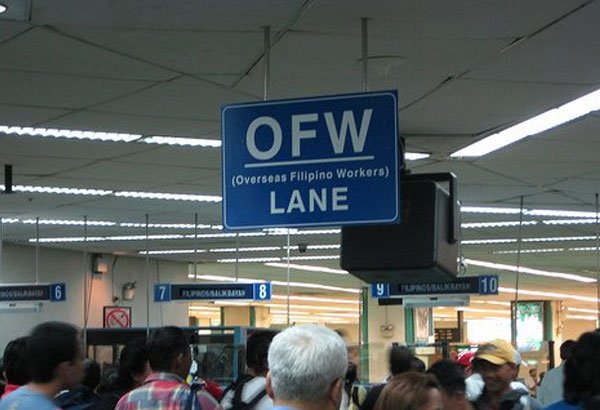MANILA, Philippines – Starting March 2017, overseas Filipino workers no longer have to pay the P550 airport terminal fee.
Manila International Airport Authority general manager Ed Monreal announced this yesterday in a news forum at the Manila Hotel.
Monreal said his office is working on technical details and coordinating with international airlines to eliminate the airport terminal fee imposed by the previous management of Ninoy Aquino International Airport (NAIA) on OFWs in February 2015.
OFWs are required to pay the P550 airport terminal fee when they buy tickets online or in airline ticket offices. They can claim their refund upon departure at the airport terminals.
But since OFWs are busy individuals, many failed to claim their refund.
Total collections of the airport terminal fee has reached more than a billion pesos and half of this amount remains unclaimed by OFWs. The unclaimed amount remains in the general fund of the NAIA.
Monreal said his office is ready to refund the fees to OFWs as long as they possess the E-ticket, boarding pass and passport they used even several years ago.
Air traffic to improve
Air congestion at NAIA is also expected to be greatly reduced in the first quarter of 2017 as aviation agencies prepare projects for more efficient management of air traffic.
Antonio Manuel Tamayo, deputy director general of Civil Aviation Authority of the Philippines said the much-delayed Communication and Navigation System (CNS) and Air Traffic Management (ATM) would be operational soon as these have been installed near the NAIA runway.
The CNS/ATM system is comprised of a computer-based flight data processing system that will enable aircraft operators to meet their scheduled departure and arrival and stick to their preferred flight plans with minimum constraints and without compromising agreed levels of safety.
It will also extend surveillance of aircraft and improve navigational accuracy.
“The government had constructed 12 radar stations across the Philippines as adjunct to the CNS/ATM to monitor each arriving and departing flight, and these would greatly speed up the landing and takeoff, contributing to the efficiency of the NAIA,” Tamayo said.
Air traffic controllers and other technical experts are being trained as part of the CNS/ATM system.
“Right now, they are doing shadow training, comparing the airplanes they see on the current radar system with this next generation system that is also linked to satellite in space,” Tamayo said.
Credits to: philstart.com


















